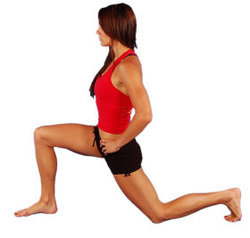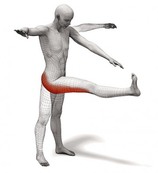Warm Up For Cardiovascular Exercise
Sport-Specific Dynamic Stretching

During this final phase of the warm-up, 10 to 15 minutes of sport-specific dynamic stretches and drills should be used to prepare the athlete for the specific demands of their chosen activity.
Dynamic stretching can be seen as the most beneficial phase out of the three, because it will leave the athlete at their physical and mental peak. It is very important to keep the dynamic stretches specific to the athlete’s particular activity, because this will ensure the target muscles and specific areas of the body are ready for the exercise. After completing the sport-specific dynamic stretching phase, the athlete will be fully prepared for the rigors of the intended activity.
What is dynamic stretching?
Dynamic stretching involves moving parts of your body, using controlled bouncing or swinging movements, and gradually increasing reach and speed of movement. The intensity of the bounce or swing is gradually increased and should never become uncontrolled.
Be careful not confuse ballistic stretching with dynamic stretching:
- Ballistic stretching involves forcing your body beyond its normal range of motion.
- The goal of dynamic stretching is to warm up the ligaments, muscles, and tendons that will primarily be used by the intended exercise.
Health Disclaimer

Please keep in mind that dynamic stretching should only be performed under the supervision of a professional sports coach or trainer, due to a high risk of injury if used incorrectly. Dynamic stretching is more for muscular conditioning than flexibility and is really only suited for professional, well trained, highly conditioned athletes. Dynamic stretching should only be used after a high level of general flexibility has been established.
Take a look at these two videos which demonstrate a few dynamic stretching techniques:
